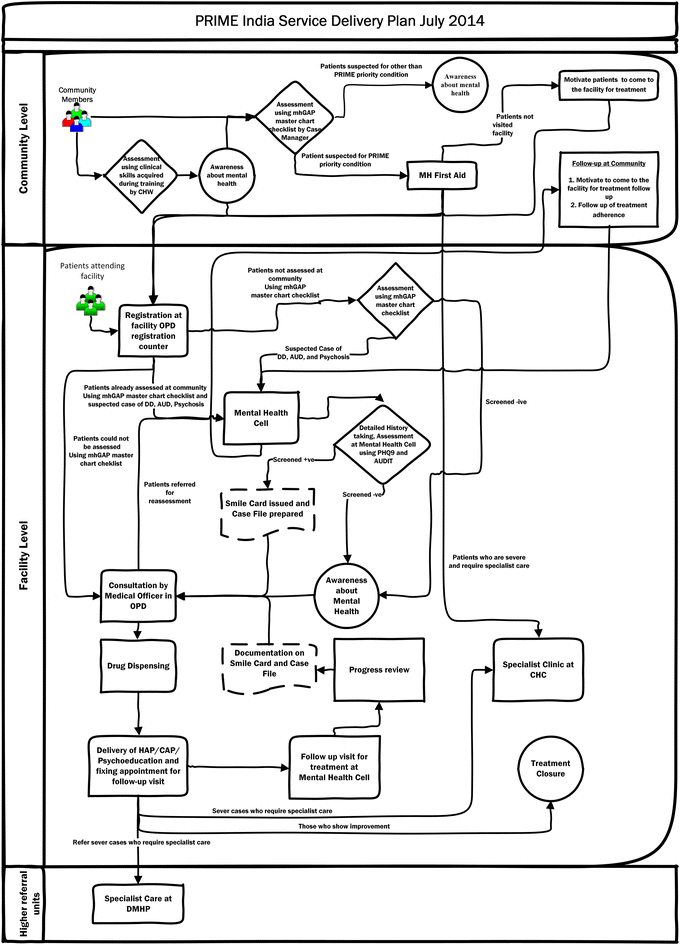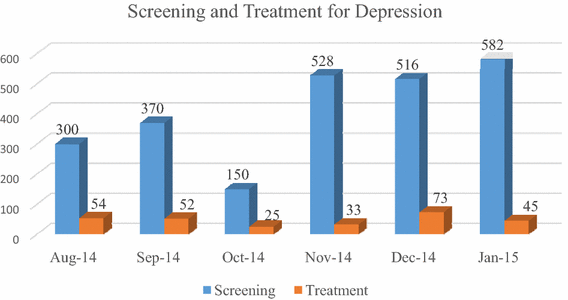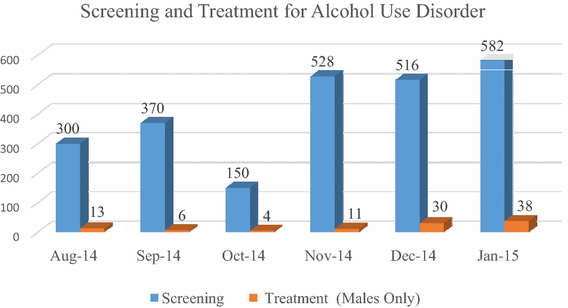Making complex interventions work in low resource settings: developing and applying a design focused implementation approach to deliver mental health through primary care in India
- PMID: 29387148
- PMCID: PMC5778695
- DOI: 10.1186/s13033-018-0181-7
Making complex interventions work in low resource settings: developing and applying a design focused implementation approach to deliver mental health through primary care in India
Abstract
Background: Globally, there is a large treatment gap for people with mental disorders, and this gap is especially extreme in Low and Middle Income Countries. This gap can be potentially bridged by integrating evidenced based mental health interventions into primary care, but there is little knowledge about how to do this well, especially in countries with weak health systems. Research into the best implementation approaches is a priority, but in order to do so, it is first necessary to adapt implementation science principles and tools for mental health services in low resource settings.
Results: The frameworks that have been used to implement evidence-based behavioral health and health care interventions in High Income Countries do not directly apply to contexts where resources and processes for service delivery and support do not exist. We propose an implementation approach for low resource settings, called design-focused implementation, emphasizing the design of delivery systems using systematic design methods as precursor to implementation in severely resource constrained environments. This approach draws from existing literature in design thinking, quality implementation, improvement science and evaluation and we describe its use in creating the processes, organizations and the enabling environment for integration of mental health service delivery into primary care in India.
Conclusions: Design-focused implementation will be useful for guiding research and practice in closing the implementation gap for a wide variety of complex interventions in low resource settings.
Keywords: Implementation science; India; Mental health; Primary care; Research.
Figures
References
-
- WHO . Intervention Guide—Version 2.0 for mental, neurological and substance use disorders in non-specialized health settings. Geneva: World Health Organization; 2016. - PubMed
LinkOut - more resources
Full Text Sources
Other Literature Sources
Miscellaneous






